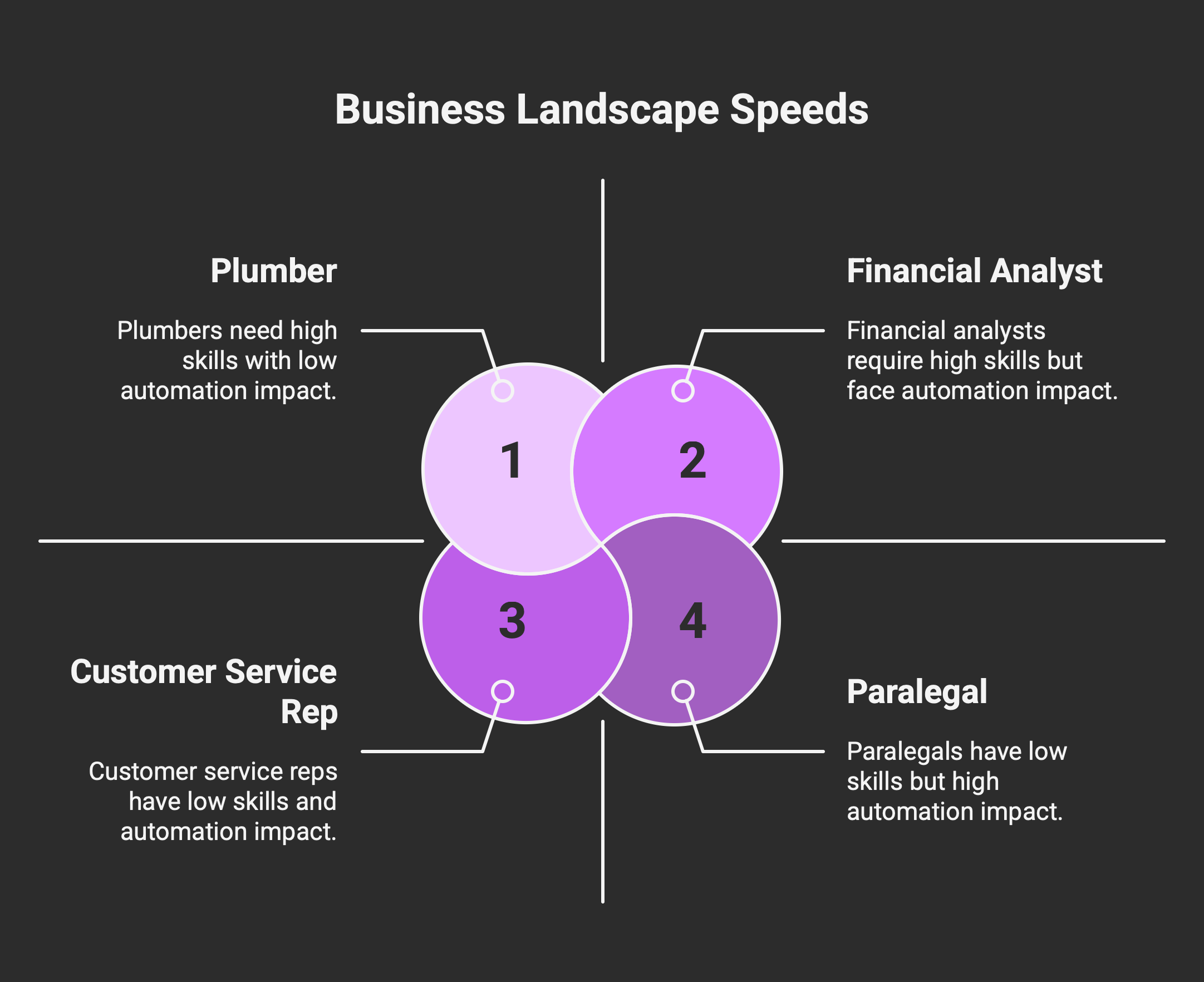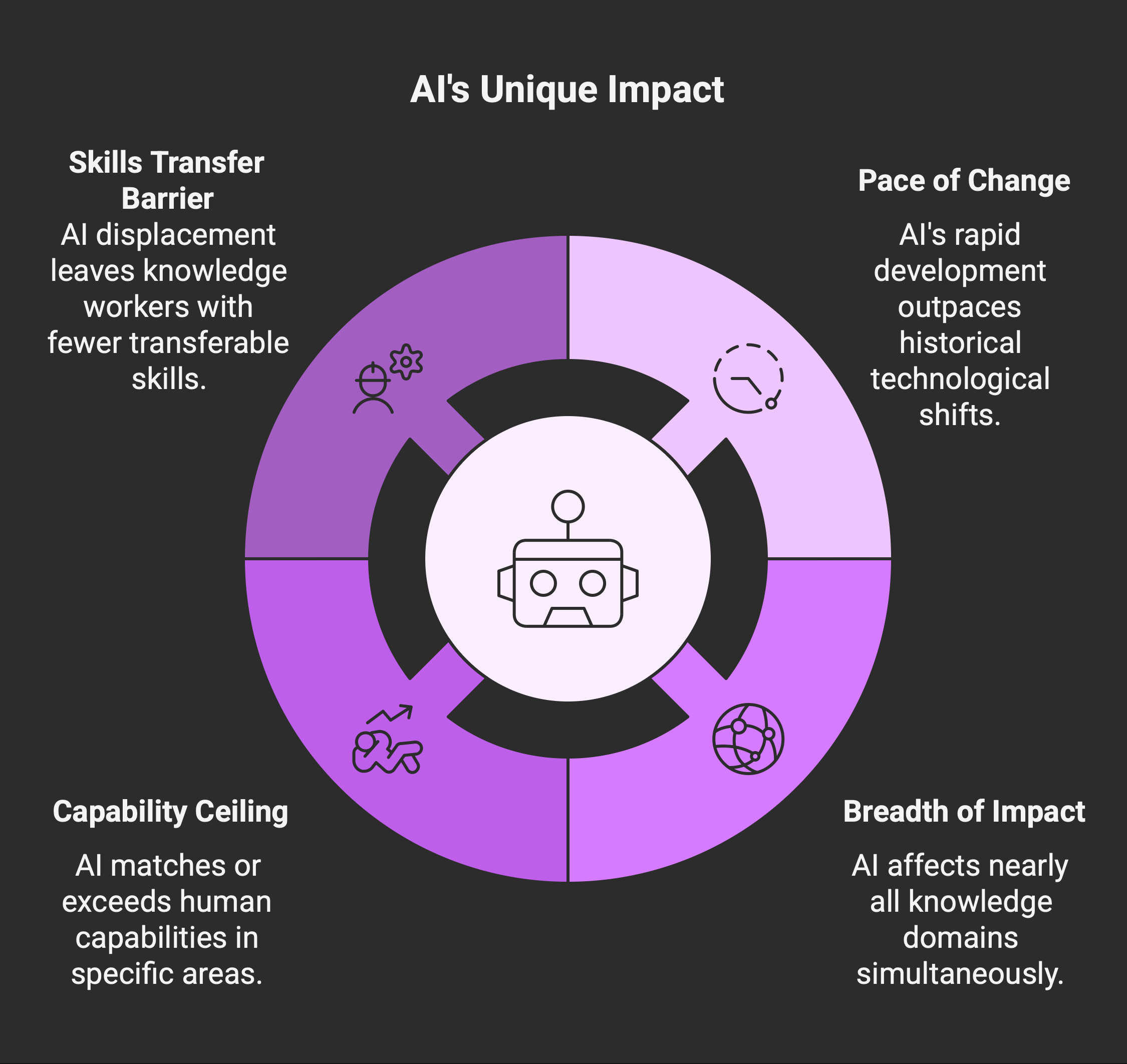The Plumber Paradox: What Geoffrey Hinton's AI Warning Means for Your Business Future
Geoffrey Hinton, AI pioneer, advises learning trades like plumbing as AI disrupts knowledge work. Businesses must audit roles, plan transitions, and redefine work to balance efficiency and responsibility in the superintelligence era.

Last week, I found myself captivated by Steven Bartlett's interview with Geoffrey Hinton on "The Diary of a CEO" podcast. When the "Godfather of AI" was asked about career prospects in a world of superintelligence, his response was startlingly straightforward: "Train to be a plumber."
Wait. The Nobel Prize-winning pioneer whose neural network research underpins modern AI systems is telling kids to pick up a wrench instead of learning Python?
That's not just a throwaway line—it's a business reality check we need to dissect.
The Coming Intelligence Tsunami
Let's get something straight: AI isn't just another tech revolution; it's fundamentally different. The industrial revolution replaced our muscles. The AI revolution is replacing our brains.
As Hinton puts it, "Mundane intellectual labor is like having strong muscles, and it's not worth much anymore. Muscles have been replaced, now intelligence is being replaced."
This isn't just academic pontification. I've witnessed this firsthand while implementing AI systems across organizations. What took knowledge workers hours now takes minutes. Reports that required teams now need a single person with an AI assistant.
Just last month, I sat across from the CEO of a well-established SaaS company who confided something unexpected. His primary concern wasn't about product roadmaps or competitive threats—it was about his people. "I'm more worried about what happens to our developers, marketing specialists, and financial analysts than I am about our software," he admitted. This is from a tech executive who built his career on product innovation.
His worry wasn't abstract. He'd already seen how AI tools were absorbing tasks that previously required specialized knowledge workers. Functions that once needed teams of eight now operate efficiently with three people and AI assistance. The productivity gains were undeniable, but so was the human cost.
The Two-Speed Business Future
Here's what's fascinating about the transition we're experiencing: we're creating a business landscape that operates at two distinct speeds.
Speed One: Physical, hands-on skills resistant to immediate automation. Plumbing, electrical work, specialized machinery operation—jobs where human dexterity in unpredictable environments still reigns supreme.
Speed Two: Knowledge work increasingly amplified (or replaced) by artificial intelligence. Paralegals, financial analysts, content creators, customer service reps—roles where pattern matching and information processing dominate the workday.
The cruel irony? Many parents who pushed their kids away from trades and into white-collar jobs might have accidentally set them up for disruption.

What Makes AI Different This Time
"But new technologies have always created more jobs than they destroyed!" I hear this every time I talk to seasoned business professionals.
True historically, but here's why Hinton's warning deserves serious consideration:
- Pace of change: Previous technological shifts played out over generations. AI capabilities are doubling in shorter intervals than ever before.
- Breadth of impact: Unlike specialized technologies of the past, AI is a general-purpose technology affecting virtually every knowledge domain simultaneously.
- Capability ceiling: Previous technologies augmented human capabilities. AI increasingly matches or exceeds them in specific domains.
- Skills transfer barrier: When factory workers were displaced, they could often transfer some skills to new industries. When AI displaces knowledge workers, what transferable skills remain?
One moment in the interview that particularly struck me was when Hinton compared humans' relationship with superintelligent AI to chickens' relationship with humans: "If you want to know what life's like when you're not the apex intelligence, ask a chicken." That analogy cuts straight to the heart of our collective anxiety.

The Lurking Business Crisis
The most concerning part of my conversations with executives implementing AI isn't the technology—it's the complete absence of transition planning.
Companies are rightfully excited about efficiency gains, but few are addressing the human displacement crisis brewing in their PowerPoint decks. When I ask about transition strategies for affected workers, I get blank stares or vague talk about "reskilling."
This isn't just an ethical blind spot—it's a business risk. Mass unemployment or underemployment creates a consumer spending crisis. Who buys your products when jobs evaporate faster than new ones emerge?
That SaaS CEO I mentioned earlier? He was rare. He had already started allocating budget for what he called "capability transition"—not just generic training, but pathways to move specialized workers into emerging roles that combined human judgment with AI amplification. "The alternative is burning through our talent and ending up with nothing but efficiency," he told me. "That's not a company I want to lead."
(If you want a deeper dive into Assessment, Evaluation, and Personal Development, check out my three-part series.)
Business Strategies for the Superintelligence Era
So, what does Hinton's plumber recommendation mean for your business strategy? Here's how I'm advising my clients:
- Audit your workflow for AI vulnerability. Map every role in your organization and assess its exposure to AI automation. Which jobs involve repetitive intellectual tasks? Which require physical dexterity or emotional intelligence?
- Create transition pathways. Develop concrete plans for workers in high-vulnerability roles. This means real investment in training programs with definable outcomes, not generic "digital skills" courses.
- Redefine knowledge work. Reshape remaining knowledge roles around uniquely human capabilities: complex ethical judgment, creative leaps, emotional intelligence, and contextual adaptation.
- Balance efficiency with responsibility. The AI efficiency gains are real and necessary for competitiveness. But so is preventing a human capital crisis. Smart businesses are reinvesting some AI-driven profits into workforce transition.
- Embrace hybrid intelligence models. The most successful implementations I've seen pair humans with AI rather than replacing them entirely. The combination often outperforms either alone.

The Plumber Paradox Resolved
Here's what I think Hinton meant: not that everyone should become plumbers, but that we need to reconsider which skills truly provide durable economic value in a world where artificial intelligence increasingly commoditizes knowledge work.
The coming decade will require businesses to navigate this transition thoughtfully. Those that merely chase efficiency without considering the human element will eventually face a reckoning—whether through regulatory intervention, consumer backlash, or simply running out of customers who can afford their products.
As for me, I'm teaching my kids both coding and carpentry. Because in a world of superintelligence, adaptability across both digital and physical domains might be the most valuable skill of all.
What's your business doing to prepare for this shift? The time to start planning isn't when AI has already transformed your industry—it's now.
Interested in discussing AI transition strategies or workforce evolution planning? Feel free to connect on X or subscribe to my newsletter. I'm always open to conversations about navigating the complex intersection of technology, business, and human potential.
Stay Raw | Stay Real | Stay Intense.
